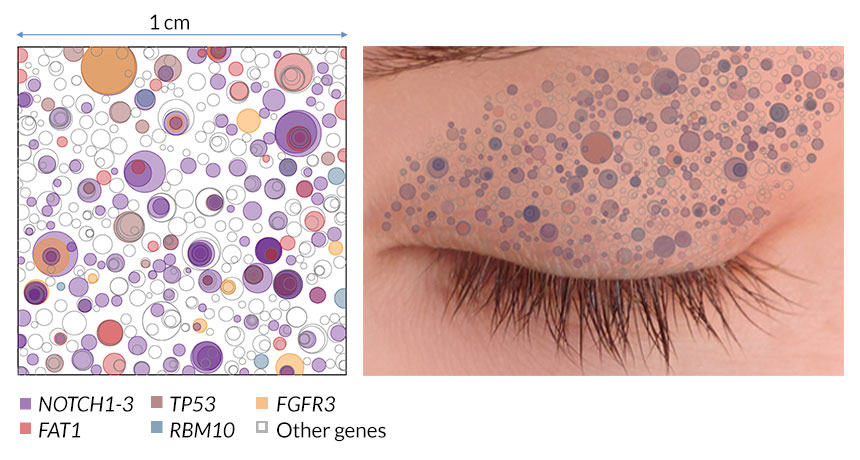
EYE-OPENER Normal skin is a patchwork of cells, many of which carry cancer-driving mutations, a new study finds. In a representation of normal skin, colors indicate the mutated genes and circles reflect the size of skin patches from healthy eyelids carrying the mutation.
I. Martincorena et al/Science 2015, I. Martincorena






